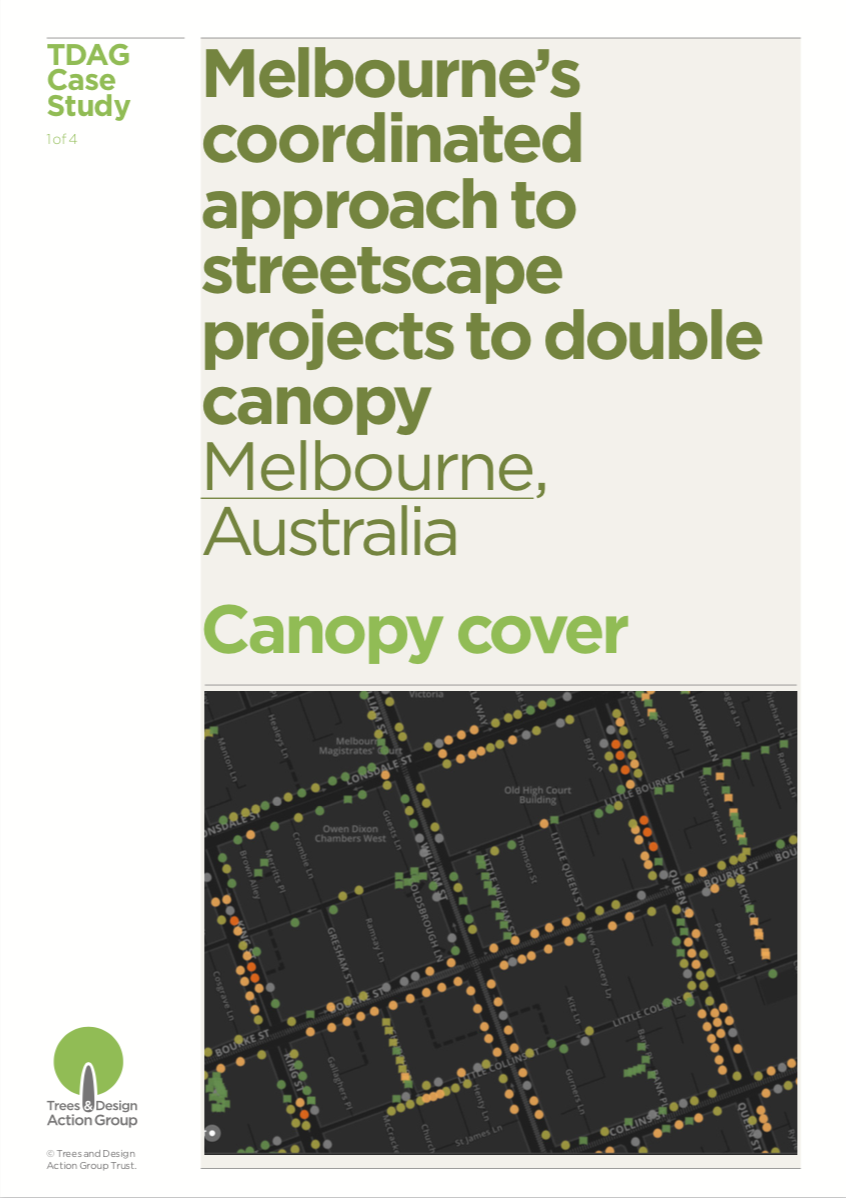| Melbourne is aiming to double public realm canopy cover from 22.5% (2011 baseline) to 40% by 2040. To achieve this goal set in Melbourne’s Urban Forest Strategy (2012), the council’s urban landscape department, which leads strategic planning, management and capital investment for the city’s public open spaces (including parks, gardens and the “urban forest”), conducted a comprehensive survey of Melbourne’s street trees. The survey looked at species, size and condition to assess the safe useful life expectancy of each tree. This database was then used to model how the canopy would evolve under different circumstances, including a “do nothing” scenario. The modelling showed that reaching the 40% canopy cover target would require planting an average of 3,000 trees a year over the next decade. The modelling did not focus exclusively on tree numbers but also considered how the tree planting conditions would affect canopy size. |
Delivery of such an ambitious urban forestry programme would not be possible without strong interdepartmental collaboration. To facilitate this, a streetscape coordination committee has been established bringing together, on a monthly basis, the traffic and parking, capital works and urban landscape departments. The committee ensures that, wherever capital or refurbishment work is being planned in the highway, adequate green infrastructure provision is integrated into the projects, following the priorities and principles defined in the precinct plans. It also enables budgets and community engagement efforts to be shared across teams. Similar coordination takes place with the urban design team, when new developments make contributions to public realm improvements.
Results so far have been as follow:
| Project team: | The urban forestry programme of work is led by the City of Melbourne’s Urban Sustainability Branch (of the City Strategy and Place Group). |
| Completion date: | 2012-ongoing. |
| Further information: |
|
| Download: |
| ||
| Version: | This case study was originally published in Trees in Hard Landscapes: A Guide for Delivery (2014). Version 1.1 above was released in February 2018. |
| Author(s): | This case study was drafted by Anne Jaluzot, based on interviews with Ian Shears (Leader, Urban Sustainability Branch, City Strategy and Place Group, City of Melbourne). |



 RSS Feed
RSS Feed